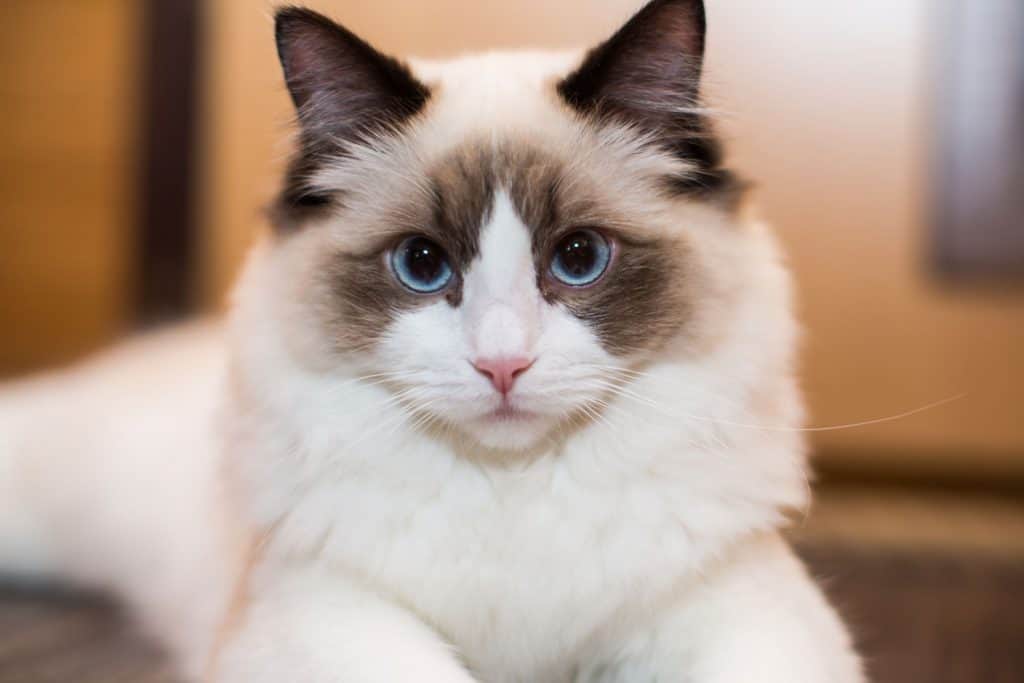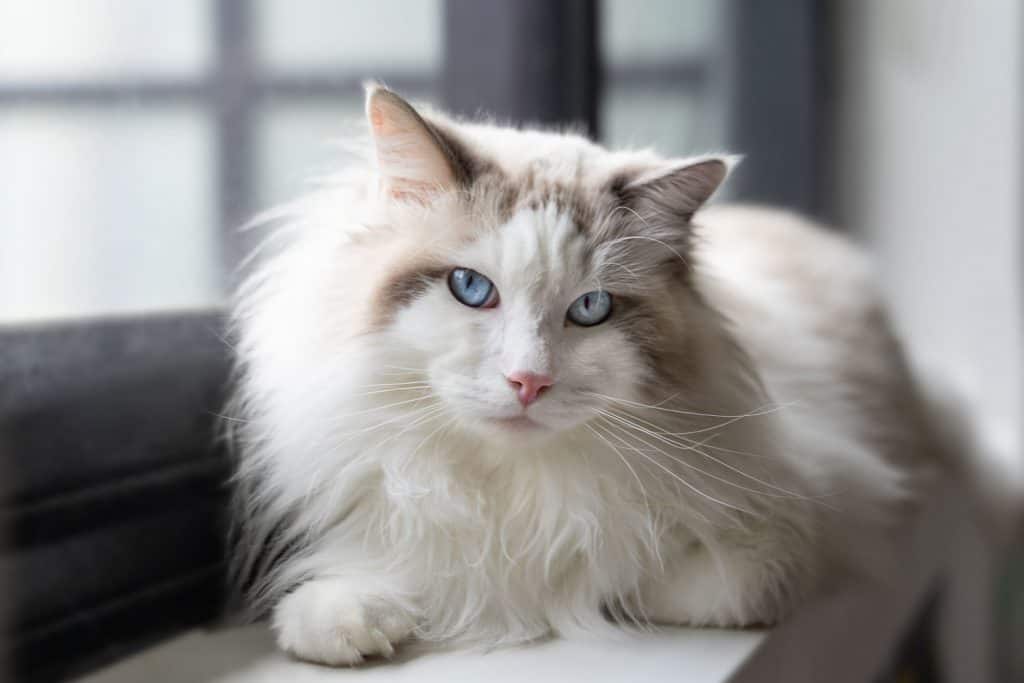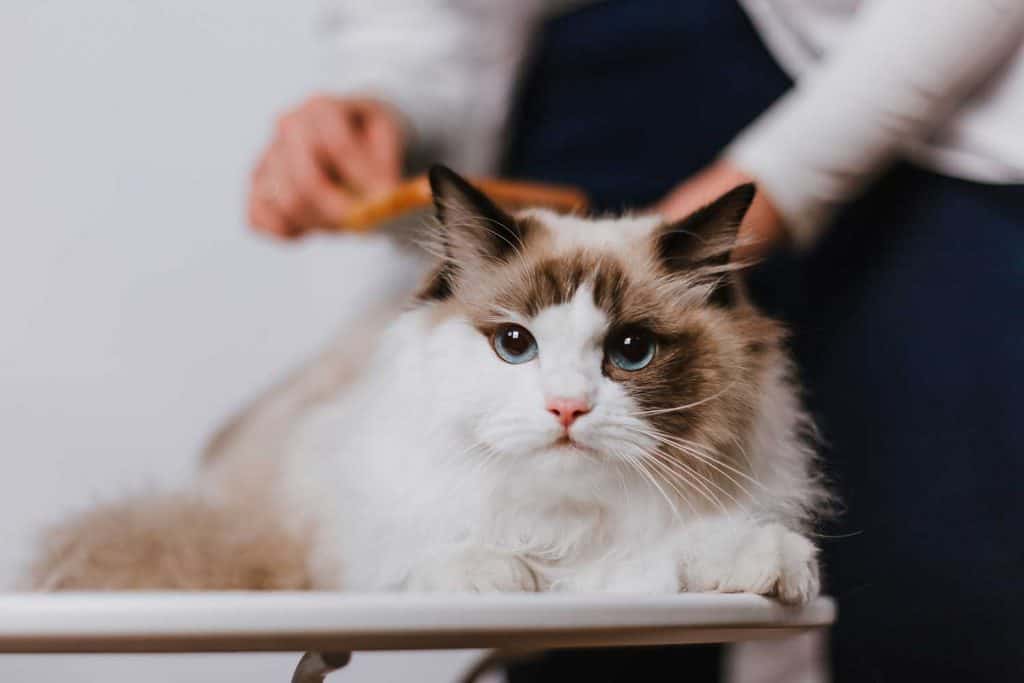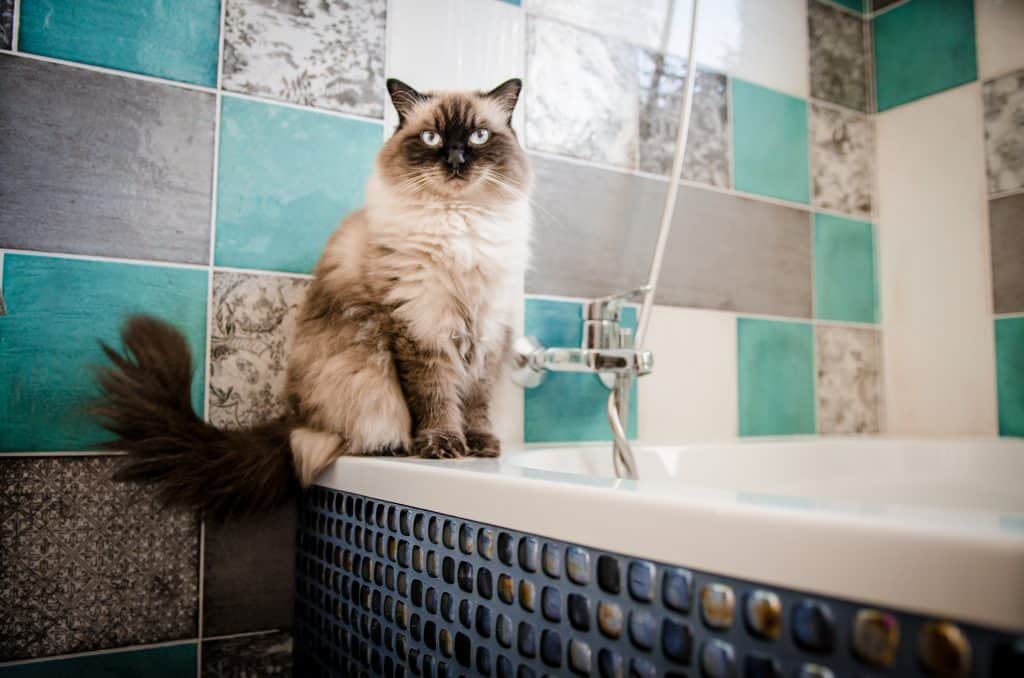There's no denying the enchanting allure of Ragdoll cats. Those mesmerizing eyes. That irresistibly silky coat. It's easy to see why they're among the world's most coveted feline breeds.
Now, whether you're already spellbound by a Ragdoll's charm or are contemplating bringing one into your life, you might be wondering: Are Ragdolls considered long-haired cats?
And what about that mysterious undercoat? Stick with us, because armed with meticulous research, we're about to guide you through the layers of a Ragdoll's grooming secrets.
But first, let's unravel the stunning truth about the fluff, the fur, and everything beneath!
Ragdoll Cats: Unraveling the Mystery of the Plush Coats
So, are Ragdolls long-haired cats? Absolutely. These felines have lush, fluffy fur that only gets thicker with age.
And here's something unusual: they don't have the typical undercoat found in most long-haired cat breeds. That means they're less likely to shed and trigger allergies. But how do you care for a Ragdoll's coat, you ask?
Hang tight, because we're diving deeper into this topic as we guide you through effective grooming tips and guidelines for your beloved pet.
![A fluffy ragdoll cat in the backyard, Are Ragdolls Considered Long Hair? [And Do They Have An Undercoat]](https://meowhoo.com/wp-content/uploads/2021/12/Are-Ragdolls-Considered-Long-Hair-And-Do-They-Have-An-Undercoat-683x1024.png)
The Remarkable Layers of a Ragdoll's Coat
What truly sets a Ragdoll's coat apart? Its regality. Soft as silk and plush like a rabbit's fur, a Ragdoll's coat is one of its most defining characteristics.
They also have neck ruffs that are fluffier than the rest of their body, lending them a distinguished look. Now, there may be slight variations from feline to feline.
Some Ragdolls may have longer guard hairs, which is the top layer of the coat. But for the most part, these differences are subtle.
Because they lack an undercoat, Ragdolls are not as prone to shedding as other long-haired breeds. Their seasonal shedding mostly occurs during spring and autumn.
And while they don't generally require extensive grooming, it's essential to check for matting in their belly and armpit areas, particularly during shedding season or as they age.
Understanding the World of Ragdoll Coat Types
Did you know Ragdolls are classified according to their coat types? Yes, there are four distinct types, namely: traditional, mink, sepia, and solid.
But here's a controversial point: some cat lovers, breeders, and cat associations do not consider any cat besides traditional Ragdolls to be Ragdolls. Others, however, recognize and embrace them as the Ragdoll breed.
What's the truth behind the four Ragdoll coat types? Let's take a closer look.
1. The Traditional Ragdoll: A Symphony of Fluffy Coats and Blue Eyes
Have you ever seen traditional Ragdolls? They have lush coats and captivating blue eyes.
And here's an interesting fact: they're born pure white and only develop their color once they reach four days to two weeks of age.
2. Mink Ragdolls: Plush, Diverse, and Born with Their Colors
Mink ragdolls have thicker coats than traditional ragdolls with exceptionally fluffy tails.
While they have the same color and pattern variety as their traditional counterparts, their coat has richer and darker colors.
They often have aqua or blue-green eyes. Unlike traditional ragdolls, they are born with their color.
3. Sepia Ragdolls: The Epitome of Coziness and Softness
Sepia ragdolls have the thickest and softest coats of the four coat types. Their coats are also darker than mink ragdolls, and they can have a wide range of eye colors.
4. Solid Ragdolls: A Study in Contrast and Dense Colors
Solid ragdolls have the darkest and deepest colors among all four types. Unlike the other ragdolls, they're not colorpoint cats with different shades throughout their body.
Instead, their different colors contrast strongly against each other. They also have thick, fluffy fur.
For more facts on the physical appearance and color of ragdolls' coats, check out this article: "Are Ragdolls Born White: Yes, And Here’s Why."
Tips For Maintaining Ragdolls' Coats

Ragdolls are much more low-maintenance than other long-haired cats. However, they still require a certain level of care and regular grooming to ensure that their coat stays smooth and healthy.
So, how do you keep your Ragdoll's coat well-maintained? Here are a few tips.
A Brushing Routine for a Happy Ragdoll

Do you want a happy, fluffy Ragdoll? Start with a good brushing routine. Brushing prevents tangles, hairballs, matting, and shedding.
And while it's ideal to do this every other day, once a week should suffice.
You might be asking: When should you start brushing? The answer is as early as possible. This will help prevent grooming difficulties later on and establish a routine that allows you and your pet to bond.
After all, Ragdolls are affectionate by nature, so brushing can become quality time with you.
The Art of Grooming

What's the best way to groom your cat? Start with the belly area. This is the area most prone to matting. Then work your way to the back, the hind legs, and the front legs.
Next, brush the tail, finishing the session by brushing your cat's head and rewarding them with a treat.
Be sure to brush in an upward direction first - this will help you check for fleas. Then, brush in a downward direction to smooth the fur out. If your cat struggles with brushing, avoid forcing it.
Let your cat relax and brush different parts at different times throughout the day.
Choosing the Right Grooming Tools
Now, some cats may prefer certain brushing tools over others. If your cat isn't fond of the brush you're using, consider switching it out for a more comfortable one.
Ragdoll owners often use steel combs for the cat's body and a bristle brush for their face. Or, you can use grooming gloves to remove any excess fur.
Click here to see this soft rubber brush on Amazon.
Ragdoll owners often use steel combs for the cat's body and a bristle brush for their face.
Click here to see this metal comb on Amazon.
You can also use grooming gloves to remove any excess fur.
Click here to see grooming gloves on Amazon.
A Clean Ragdoll is a Happy Ragdoll: Regular Bathing Guidelines

Remember, regular bathing is essential to prevent matting and protect your Ragdoll against dirt and bacteria. This also helps keep their coats shiny and fluffy.
However, keep the environment as pleasant as possible, as bathing can be stressful for most cats. Use just enough lukewarm water to fill up the bath but not so much that it will cover your cat's entire body.
Apply a small amount of cat shampoo and gently spread it throughout the body, avoiding the head.
After this, you can rinse the shampoo away by slowly pouring it over the body and away from their eyes and ears. Clean their face and eyes with a damp towel. Then, you can dry your cat with a dry towel or a hairdryer.
Rinse the shampoo away, then clean their face and eyes with a damp towel. You can dry your cat with a dry towel or a hairdryer.
And if your cat makes a fuss during bathing, don't force them. Instead, wait for them to calm down and reward them for good behavior.
Diet: The Inside-Out Approach to a Glossy Coat
Don't underestimate the power of a good diet. Your Ragdoll's diet doesn't just affect their health; it also has a significant impact on their coat and appearance.
Ragdolls are not the most active cats, so you'll need to feed them a diet that prevents obesity while adding omega-3 fatty acids to keep their coat glossy.
Learn more about how to feed your ragdoll properly by taking a look at this post: "How Much Should You Feed A Ragdoll Cat?"
Trimming: Is It Necessary for Ragdolls?
It's not advisable to trim your ragdoll's hair. Their fur is long and thick, designed to give them protection for both warm and cold weather. Instead, brush them regularly to keep their fur well-groomed.
Fluffiness Timeline: At What Age Do Ragdolls Become Fluffier?
Ragdolls get fluffier as they age and they will reach the peak of their fluffiness at four to five years old. You may also notice that their neck ruffs get thicker and more noticeable with age.
Can a Ragdoll Have Short Hair?
No, a ragdoll cannot have short hair. If your ragdoll has short hair, it's likely mixed with a short-haired cat breed.
In Conclusion: Unraveling the Allure of the Ragdoll Cat
And there we have it. The fluffy, adorable Ragdolls with their thick and lush fur. Yes, they don't have undercoats, making them easier to groom and less likely to shed than other long-haired breeds.
But remember, they still need your attention. Regular brushing, grooming, and a healthy diet are essential to keeping their coats shiny, healthy, and silky smooth.
Who can resist the enchanting allure of Ragdolls? Whether you're a proud Ragdoll parent or are contemplating inviting one into your life, understanding their grooming needs will bring you a step closer to these marvelous creatures.
After all, part of loving them is ensuring their comfort and well-being, right?
With their mesmerizing eyes and irresistibly silky coat, it's no wonder Ragdolls continue to capture hearts worldwide. Remember the insights shared in this post, and you'll be ready to unravel more of the Ragdoll's secrets.
You might also like: Types Of Ragdoll Cats [Coat Colors And Patterns]
Do Ragdolls Always Have Blue Eyes?
Some elements on this page may have been created by our team using advanced AI to provide you with top-notch cat inspired ideas. Read more about our AI Content Policy.



